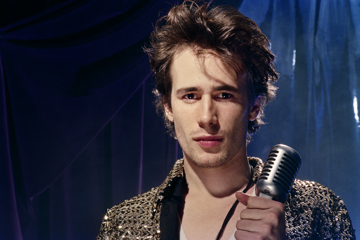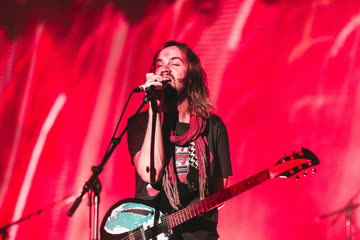Film Carew: Boyhood
Both instantly iconic and dramatically questionable.
Boyhood

For years, the production of Richard Linklater’s Boyhood flew along under-the-radar, known to his devotees as the 12-Year Project.
Beyond the fact that it would star longtime Linklater pal Ethan Hawke, Patricia Arquette, and the filmmaker’s daughter Lorelei, little was known about what, exactly, the director would be doing for 12 years. For a filmmaker already obsessed with time, it seemed a natural; no questions need be asked about the project’s raison d’être The results of this decade-plus of episodic filming, Boyhood, charts Ellar Coltrane aging from 6 to 18; going from pillowfights with big sister to adolescent boozing to, eventually, the definitive moment of the threshold of adulthood: arriving at college.
Don't miss a beat with our FREE daily newsletter

Time passes in an array of haircuts and pop-songs; Linklater signposting the years with pop hits —Coldplay, the Flaming Lips, Outkast, Vampire Weekend, Phoenix, Gotye, Arcade Fire— that cement them in specific timeframes. Conversations once au courant —the Iraq invasion, the mere potential of a black president, Roger Clemens as Texan hero rather than HGH-doping court-testimony fabulist— are markers of recent days that seem now distant; and the development of technology means that we go from fliptop phones to iPhone Skyping naturally, without notice. The dull digital photography —this may be Linklater’s least-ambitious film, visually; though it’s not nearly as badly-directed as Tape, his worst movie— naturally grows sharper, better, more cinematic; the fashion, however, remains largely middle-American throughout.
After 120 years of films employing multi-kid casting, unconvincing accoutrements, make-up wrinkles and badly-appointed wigs to telegraph aging, here, now, finally, we see time actually passing before our eyes; 12 years turned into three hours. François Truffaut’s Antoine Doinel films and Linklater’s own Before series are one thing, episodes in lives with vast gaps of time in between; this is something different, something unique. It feels like a miracle that Boyhood exists, and for cinephiles and casual watchers alike, it plays as a definitive film event, instantly one of the decade’s most memorable pictures.
"It has none of the hallmarks of ‘greatness’ that are being attached to the film."
The ‘project’ nature of Boyhood is its greatest calling card, and understandably so. There’s a reason cinemas are showing a ‘making of’ featurette (with Hawke theatrically testimonialising like he’s in an infomercial) in place of the regular trailer. Like Sophie Hyde’s 52 Tuesdays —a tale of gender-transition that assembled its cast once-a-week, every Tuesday, for a year— the way Boyhood was made is more fascinating than the actual finished film itself. The making-of is indivisible from the drama, but, if we take the story on its own terms, it has none of the hallmarks of ‘greatness’ that are being attached to the film; the profound character-work of the Before films is absent. It may be a miracle Boyhood exists, but its drama hardly measures up to the production’s grandeur.
Instead, especially in its first half, Boyhood is marked by dud moments. Most galling is Marco Perella's drunken step-dad, who threatens to drag the film down into sheer soap-opera as he staggers wildly, chewing scenery. For a project so associated with patience, there’s no multi-year slowburn in this character: he starts out cursorily written, and soon devolves into villainy, his descent into screeching addiction coming on with the swiftness of Elizabeth Berkeley's caffeine-pill meltdown in Saved By The Bell. It’s as if, in depicting childhood, Linklater gets trapped in the realm of the after-school special.
Later, history repeats when a second step-dad, Brad Hawkins' army-vet, proves himself another entry in Arquette’s chosen “parade of drunken assholes”; though, gladly, by that time Boyhood has moved into the eye-rolling-teenager phase, and so his glowering masculinity and overacting can be shrugged off. Another male-authority-figure of Coltrane’s adolescence, Tom McTigue's photography teacher, gives an inspirational-sports-movie speech that feels like theme spoken aloud, like cheap exposition in a picture that's supposed to be above-and-beyond such screenwriting shorthand.
Hawke —as absent father playing part-time Disneyland Dad at first, then reformed father-figure once he, too, remarries— fares far better as formative-male figure. He’s alive and tapped into the project’s possibilities from the first; there often times where it feels as if he’s just walked out of Before Sunset. Boyhood borrows that film’s device of having a song sing story aloud, and it gets more Linklaterian as it progresses; the further it goes from boyhood, the deeper into adolescence.

As Coltrane gets older, he —remarkably, naturally, showing the influence of the production on his life— starts to look like Hawke and sound like Linklater, waxing philosophical on the NSA era and social-media’s removal of humans from inhabiting the moment; like some budding-intellectual stoner walked out of Slacker. Coltrane grows more into himself, and the role, as he ages, but Lorelei Linklater, in contrast, starts out a force of life the turns more unsure of herself; at turns sullen, awkward, bashful. As the siblings find their self-identities, Boyhood actually lives up to its plaudits, transcending its mediocre-or-worst opening hour, especially in a great final scene amidst the endless horizons of Big Bend national park.
Linklater has contested that the real star of Boyhood isn’t Coltrane, but time itself. It’s been a constant in his filmography, and was something captured with more profundity in the Before movies, and with more philosophical wonder in the Slacker/Waking Life double. It’s there from Boyhood’s beginning, when Coltrane plays with a dead bird in the dirt, coming to a formative understanding of mortality. He soon moves out of his first home, watches as Arquette paints over the height markers drawn on the doorframe. At the end, many houses later, she demands he comes around to pick up his stuff; but after 12 years, Coltrane has but a few scant possessions, a handful of totems representing the passing of time, an entire boyhood.
That Coltrane really has a fictionalised, three-hour motion-picture as his own real-world photo album lingers underneath this scene, as the project’s very production does throughout. Boyhood can never escape the way it was made, but perhaps it was never going to be able to. The result is an uneven film as worthy of criticism as the over-the-top acclaim it’s received; Linklater’s 12 Year Project a magnum opus both instantly iconic and dramatically questionable.







